By Louise Irvine
Wine has been made from grapes in Sicily since 4000 BC and the state of altered consciousness caused by drinking was considered a religious experience in ancient Greece and Rome. Dionysus was worshipped by the Greeks as the god of wine and he was identified as Bacchus by the Romans who carried on his cult in sacrifices and ecstatic Bacchanalia. The WMODA collection tells the extraordinary story of Bacchus in ceramic art.
Bacchanalia originated from the rural Greek Dionysia which celebrated the grape harvest with a procession of women carrying jars of wine, baskets of bread, and phalloi symbolizing fertility. Dionysus, a son of Zeus the chief deity, carried a wand topped with a pinecone, known as a Thyrsos, often used to destroy those who opposed his cult. Liber was the ancient Roman god of wine, inebriation, virility, and uninhibited freedom and he was reborn as Bacchus. Initiates of his cult used intoxicating wine, trance-inducing dances and music to remove inhibitions and social constraints. The frenzied Bacchanalian festivals challenged Rome’s official authority and morality and were eventually banned, but images of Bacchus and his carousing companions live on in art.
The religious rituals of the secretive Dionysian Mysteries are known from ancient Greek pottery and Roman mosaics. Bacchus was often accompanied by excited satyrs including Silenus, his foster father. The bacchanal in art features revelers in an idyllic landscape, including Bacchus, Silenus and satyrs with ecstatic female followers known as bacchantes or maenads, which literally translates as “raving ones”. Bacchus is often shown riding a leopard or wearing leopard skin as supposedly he was nursed by them. On his travels, his chariot was drawn by big cats, variously described as leopards, panthers, and tigers.
When porcelain was invented in Europe in the early 18th century, the Meissen factory made figure groups inspired by classical mythology. The Rococo style figurines were much admired by the aristocracy and adorned grand dinner tables in place of sugar sculptures. As the wine flowed, guests enjoyed Bacchanalian scenes, such as Bacchus supporting Silenus who is slumped on an ass. Although an old drunkard, Silenus was credited with wisdom and prophetic powers.
Meissen’s mythological figures continued in popularity and many original Rococo models were revived during the 19th century. In England, the early Staffordshire potters copied the figure styles popularized by Meissen and other European factories. The Wood family played a major role in developing the English pottery industry from a peasant craft. Ralph Wood I is credited with creating the first Toby jug and his son, Ralph II, continued with his molds and modeled new subjects which were copied by other potteries. The Ralph Wood style Bacchus jug at WMODA features the god with a dolphin and a chained leopard. In one of the Dionysian myths, Bacchus transforms pirates into dolphins when they try to capture him. The back of the jug features a satyr, one of the lustful drunken woodland gods which the Romans called fauns and portrayed with the ears, legs, and tail of a goat and sometimes horns. Satyrs also inspired Staffordshire face jugs and tankards which were revived centuries later by Royal Doulton for their collectible range of character jugs and toby jugs.
Horned masks of satyrs feature in the spectacular Minton Majolica Bacchus vase which was shown at the Centennial exhibition in Philadelphia in 1876. It was made in different colors and two sizes as can be seen at WMODA. Cavorting fauns and bacchantes adorned with grapes feature in Victorian figures and continued to be popular subjects during the Art Deco era.
According to Roman mythology, Bacchus was born of an illicit union between Zeus and the mortal princess Semele. The god’s jealous wife, Hera, tried to destroy her rival and caused her to be consumed by a thunderbolt. To protect his unborn son, Zeus sewed him into his thigh. At his birth, he was taken to earth by Mercury to be cared for by woodland nymphs. Francois Boucher’s painting of Le Naissance de Bacchus was reproduced by Minton in a magnificent plaque now at WMODA.
The infant Bacchus can be found on Majolica trays decorated with vine leaves for serving grapes. He is also portrayed as a babe in the arms of Silenus, his devoted tutor. Wedgwood’s Black Basalt sculpture was derived from an ancient Greek statue which was copied by the Romans. Silenus is depicted in the Greek style as a slender young man with a horse’s tail rather than a debauched old man. Drunken Silenus was popular in Victorian relief-figured jugs made by Minton, Doulton and other potteries during the 19th century.
Mythological subjects continued to be popular in the 1920s and the British sculptor, Charles Vyse, modeled figures of the Youthful Bacchus riding on a goat. A similar figure entitled Vintage shows him riding on a bull accompanied by a young girl. Bacchus is also depicted riding on a leopard by the Fraureuth pottery after a painting by the German symbolist artist Franz Von Stuck. One of the most impressive Bacchanalian figures at WMODA features a bacchante riding on a panther modelled by Francisco Polope for the Lladró factory.
Discover more about Bacchus in the upcoming Cheers exhibition when WMODA reopens.
Read more about fauns and satyrs Pan in Porcelain
Read more about Bacchus and leopards
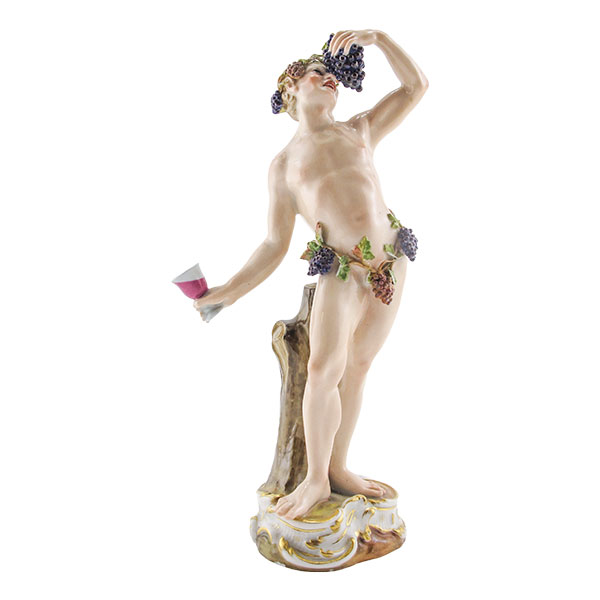
Meissen Bacchus also known as Autumn
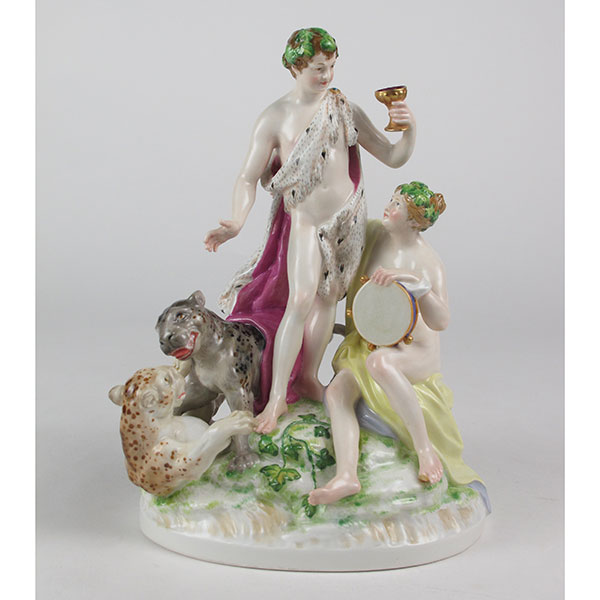
Meissen Bacchus with Bacchante
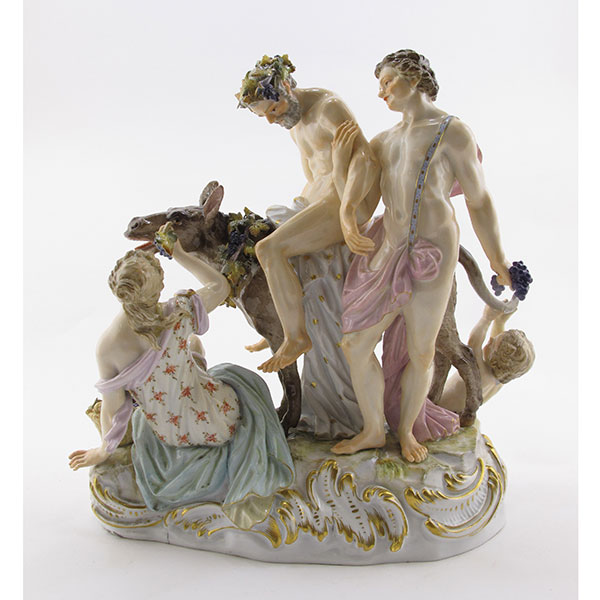
Meissen Drunken Silenus
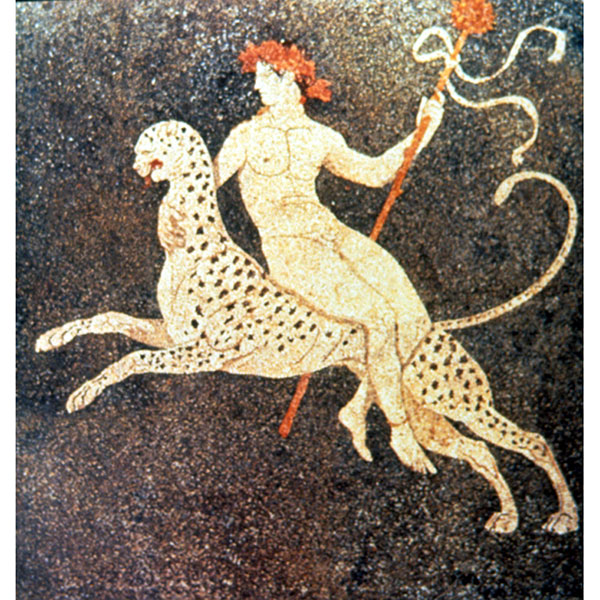
Greek Dionysus with Leopard
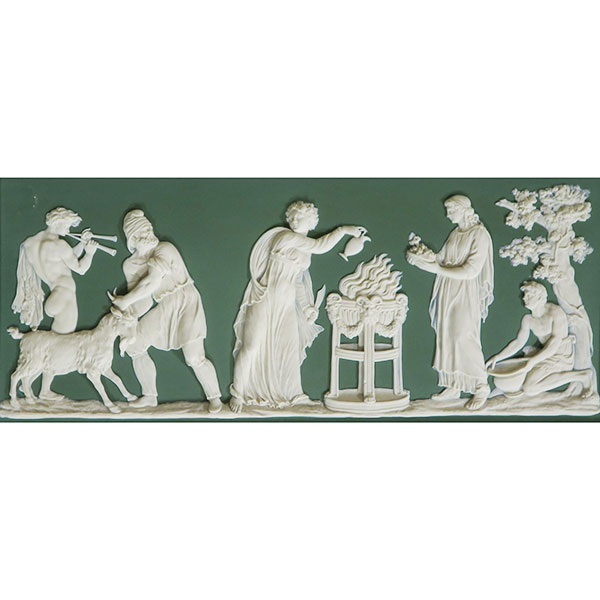
Wedgwood Sacrifice to Bacchus
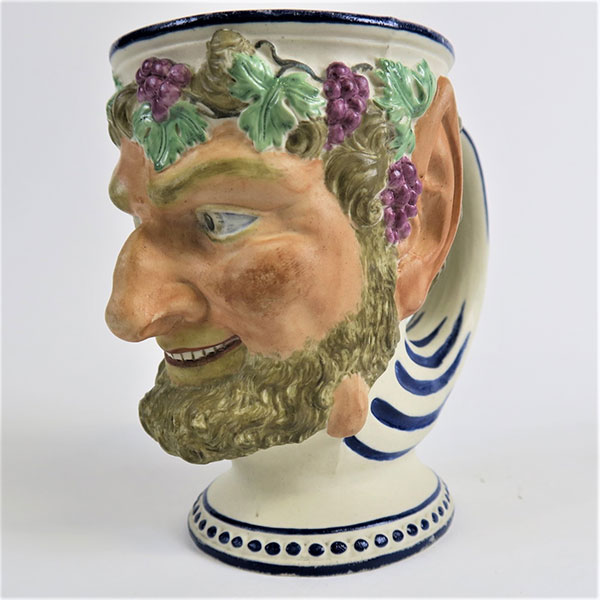
Turner Satyr Jug
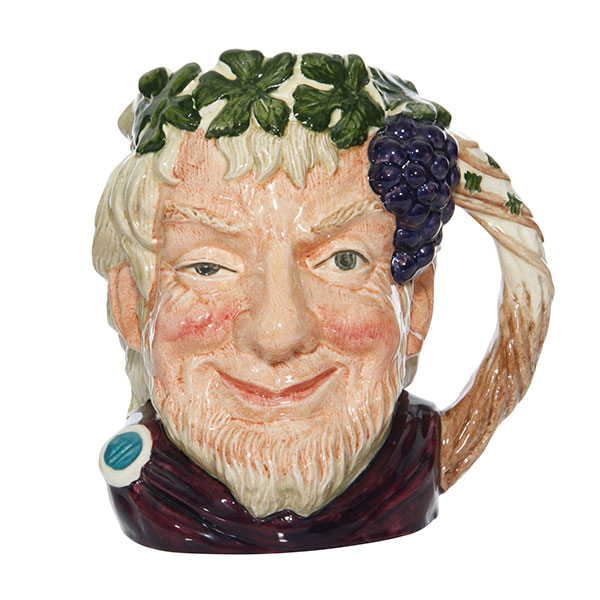
Royal Doulton Bacchus Character Jug
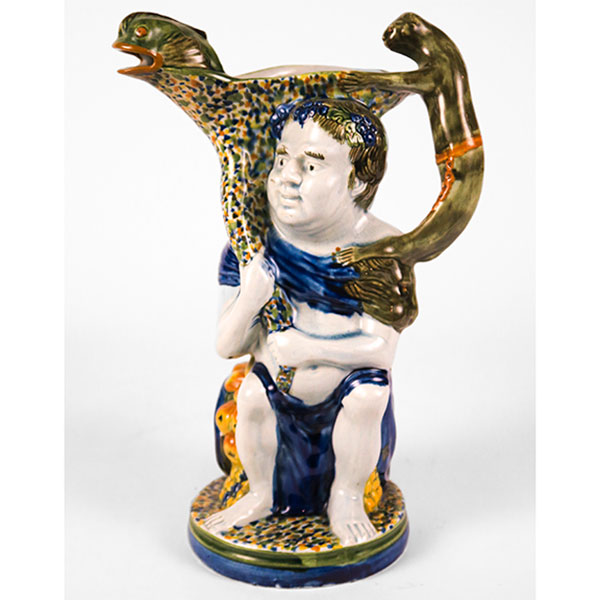
Ralph Wood Bacchus Toby
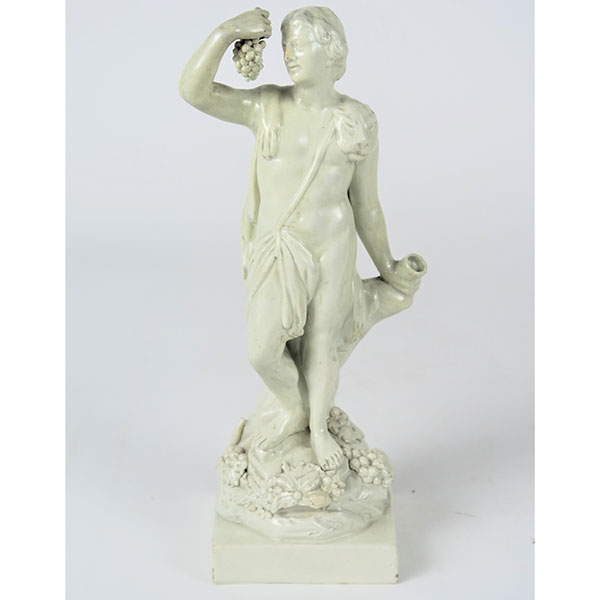
Ralph Wood II Bacchus
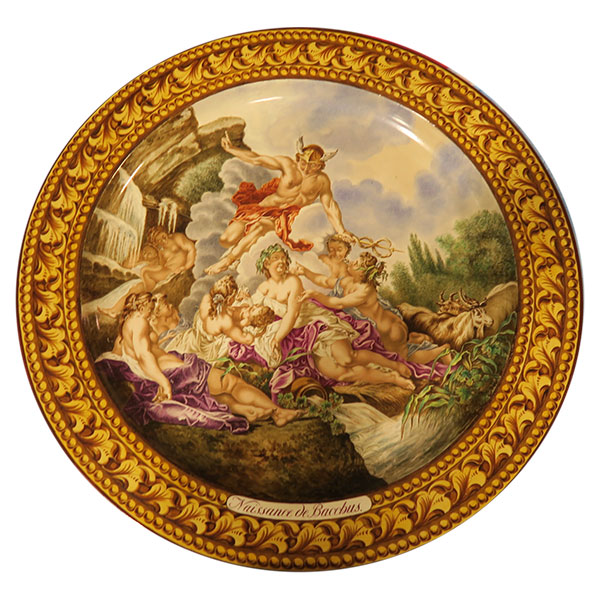
Minton La Naissance de Bacchus after F. Boucher
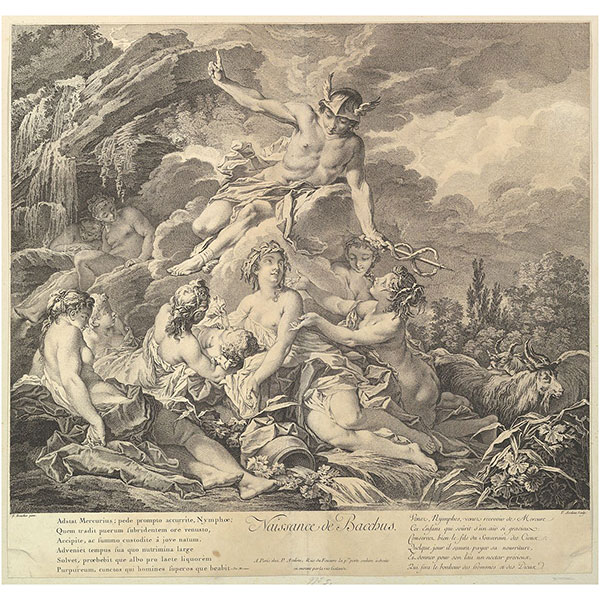
Naissance de Bacchus Engraving after F. Boucher
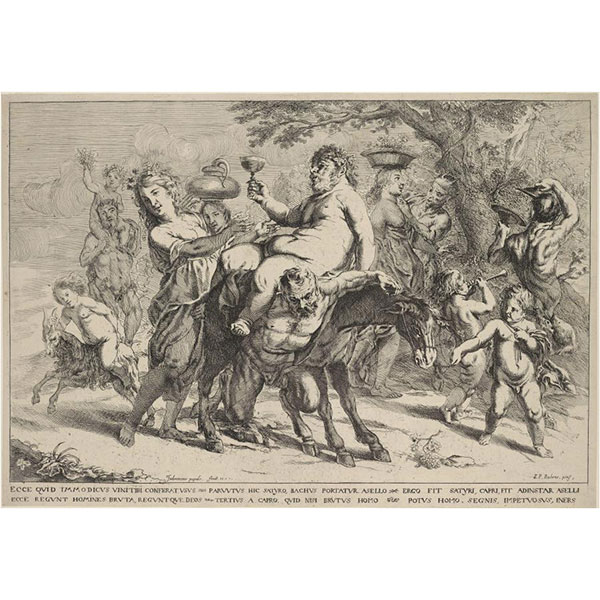
Triumph of Bacchus Engraving
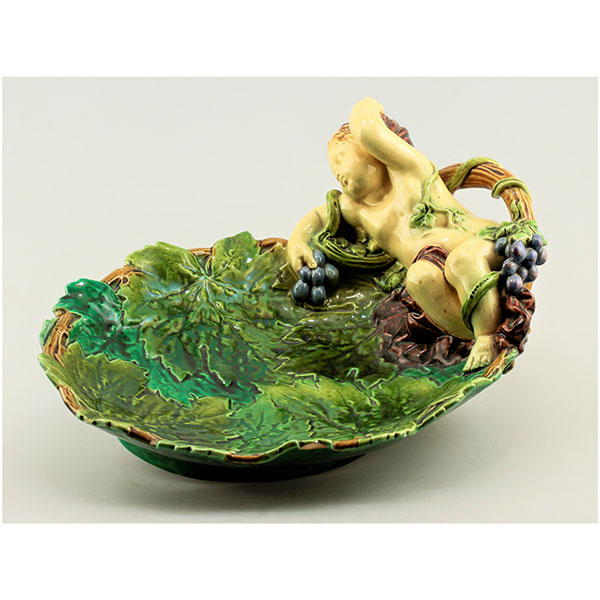
Copeland Infant Bacchus
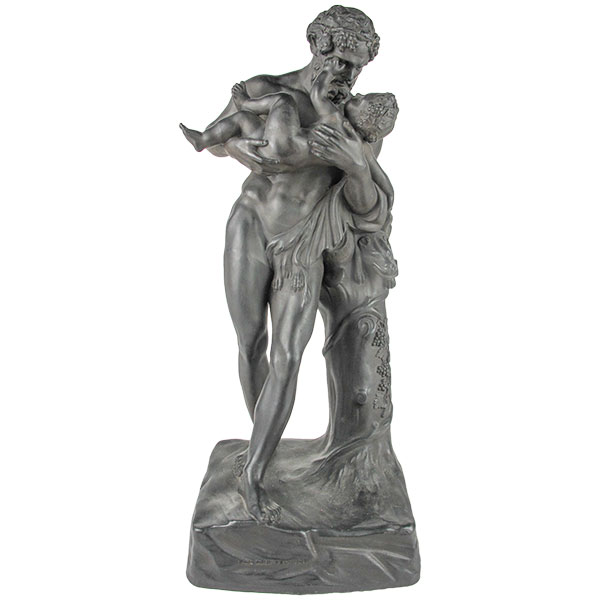
Wedgwood Silenus and Bacchus
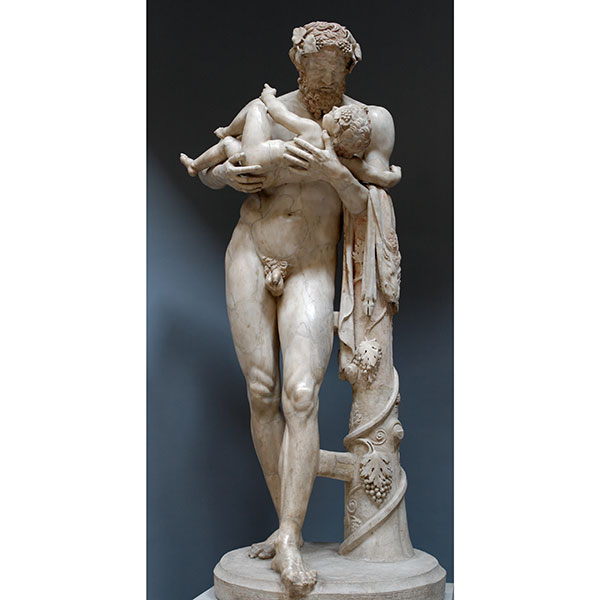
Roman Silenus and Bacchus Roman after Greek Original
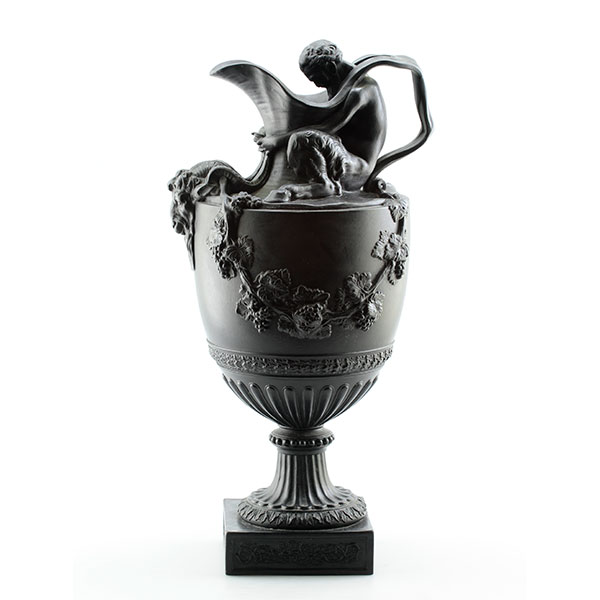
Wedgwood Sacred to Bacchus Ewer
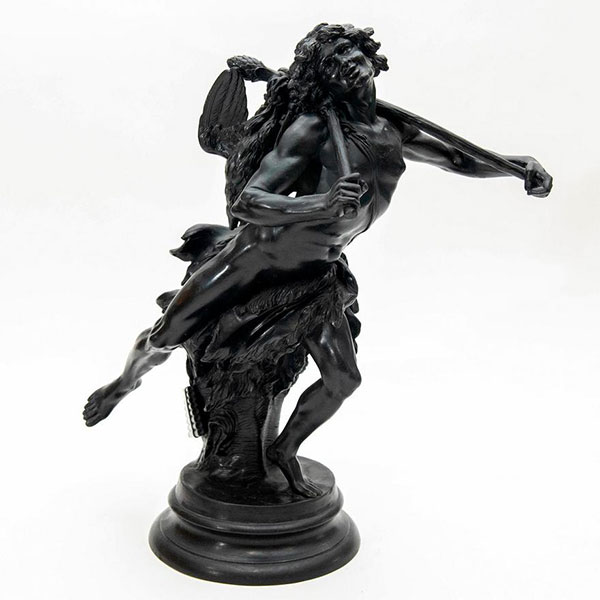
Wedgwood Black Basalt Faun
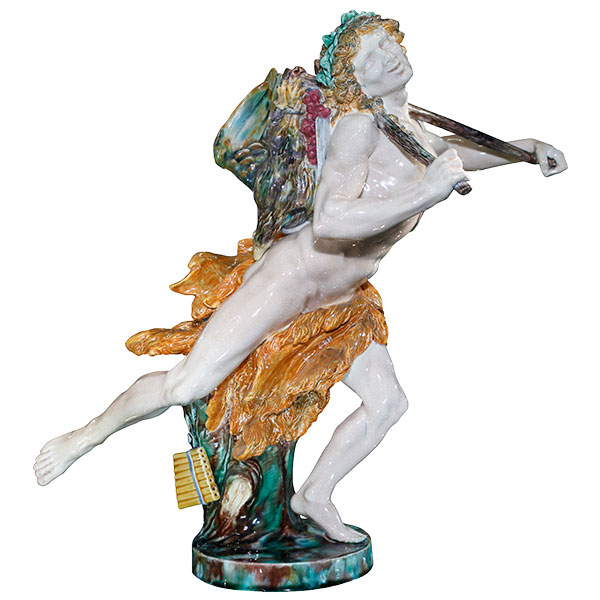
Wedgwood Majolica Faun
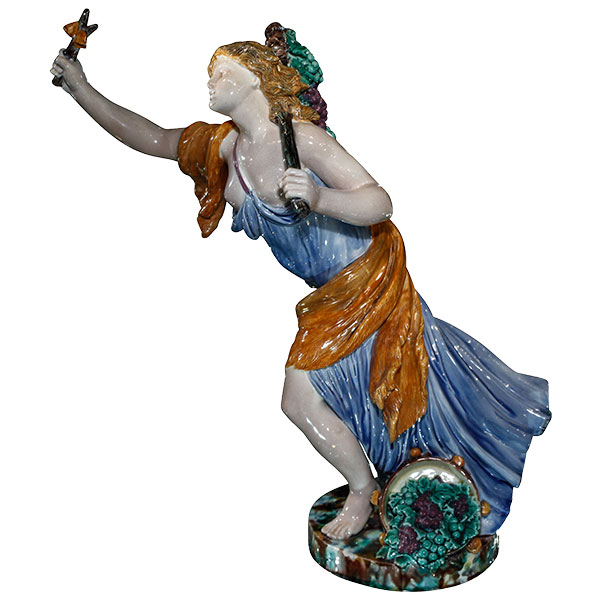
Wedgwood Majolica Bacchante
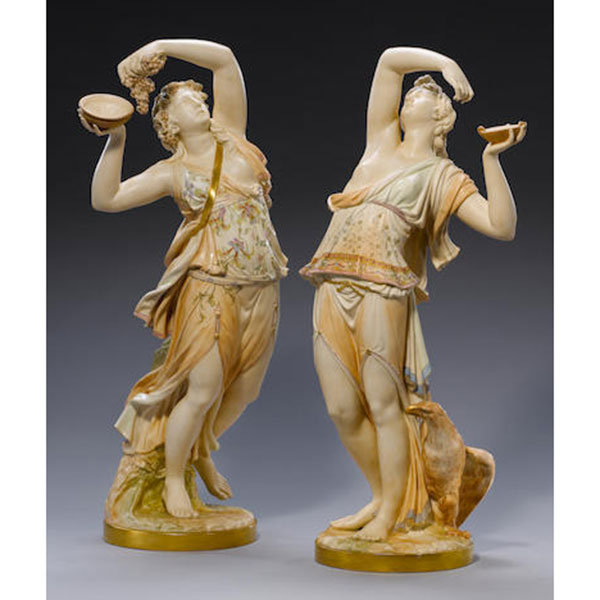
Royal Worcester Bacchantes
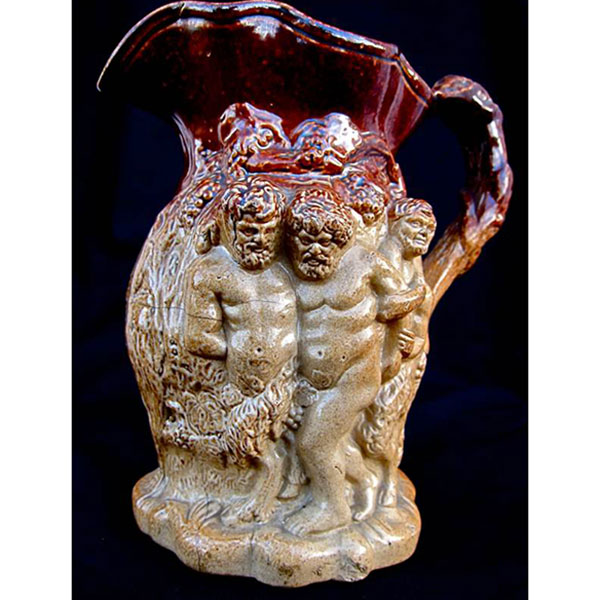
Stephen Green Silenus Jug
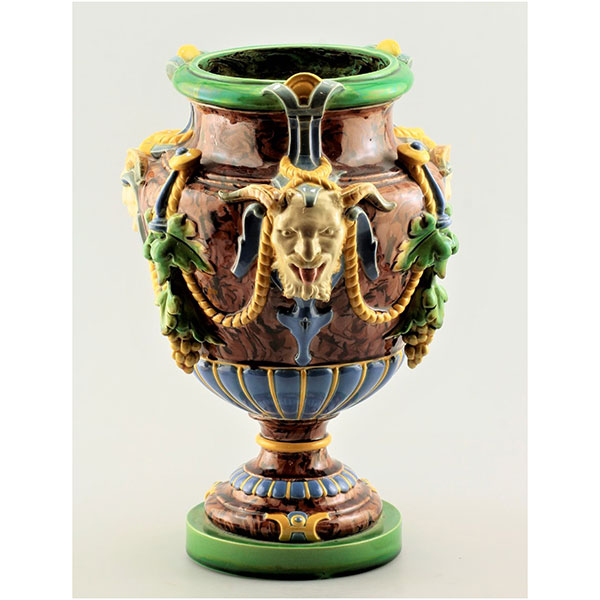
Minton Bacchus Vase
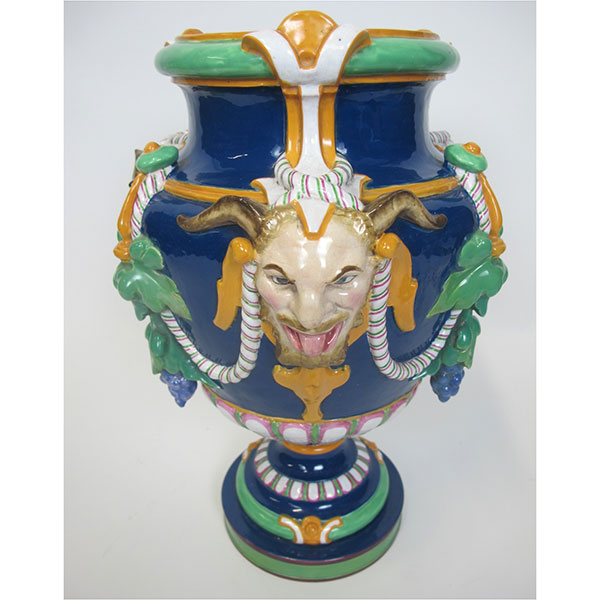
Minton Bacchus Vase
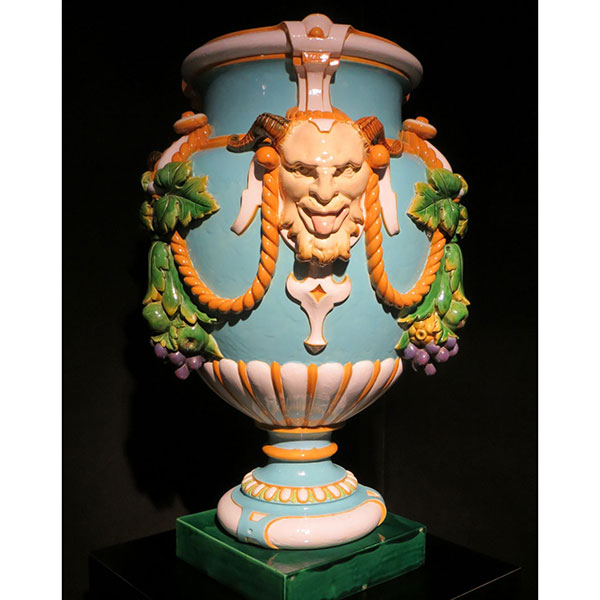
Monumental Minton Bacchus Vase
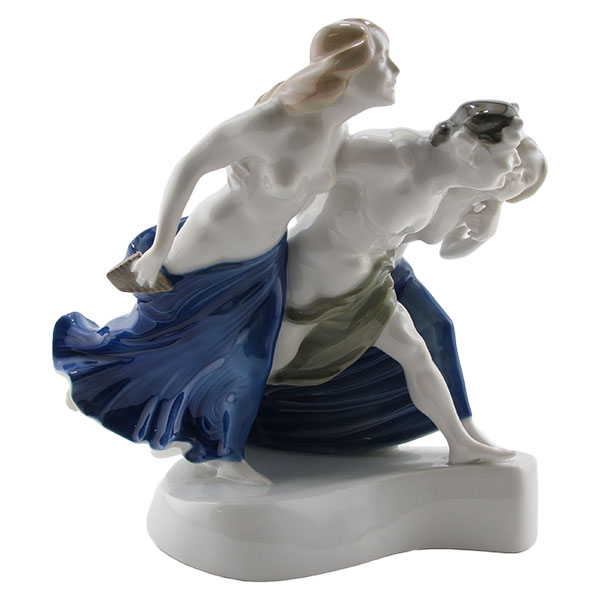
Rosenthal Storming Bacchantes
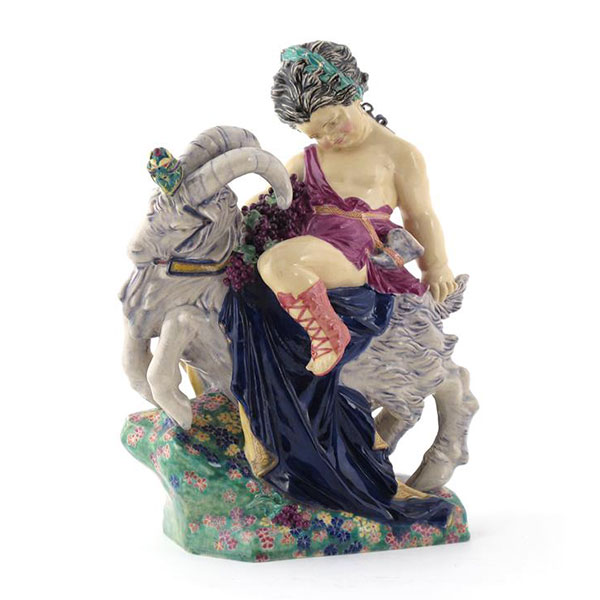
Charles Vyse Young Bacchus
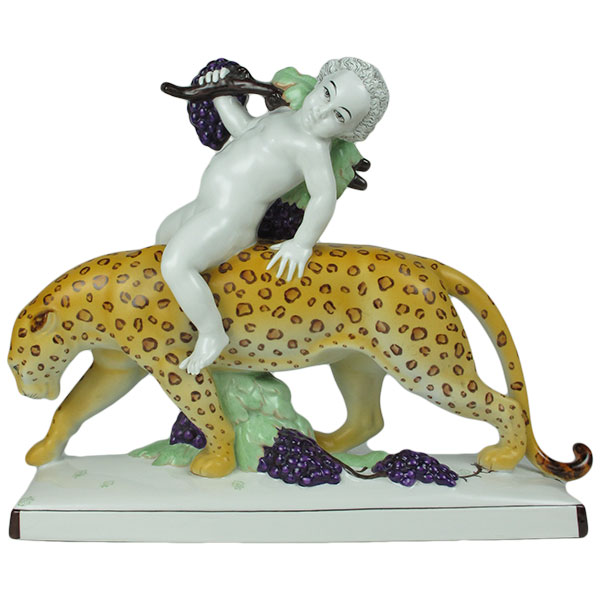
Fraureuth Boy Bacchus Riding Leopard
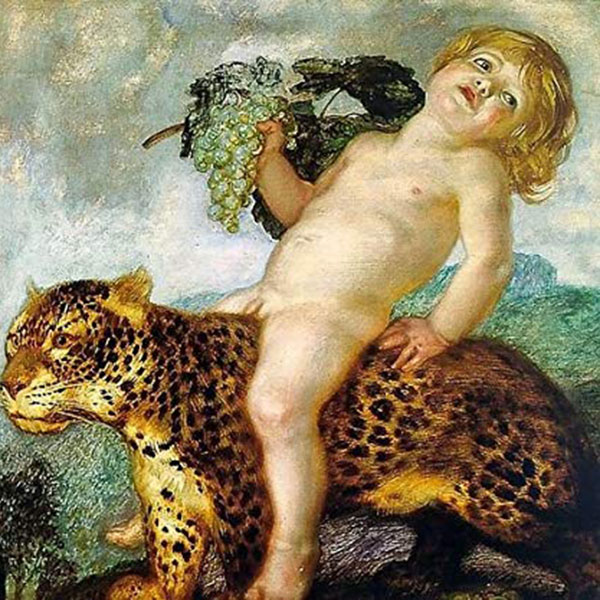
Franz Von Stuck Boy Bacchus
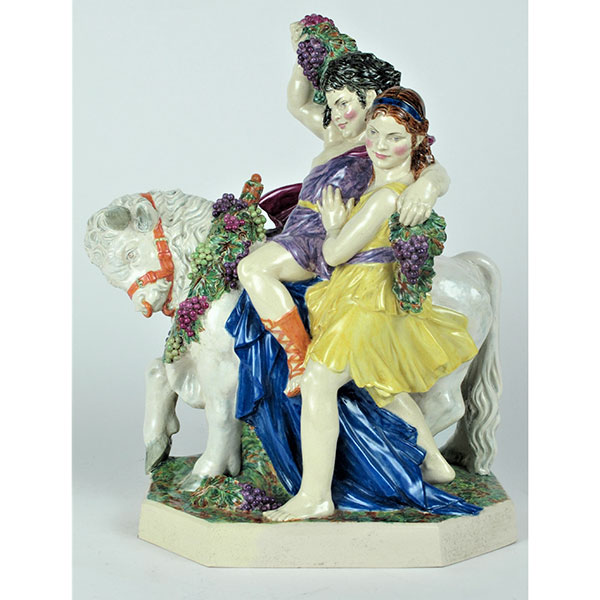
Charles Vyse Vintage
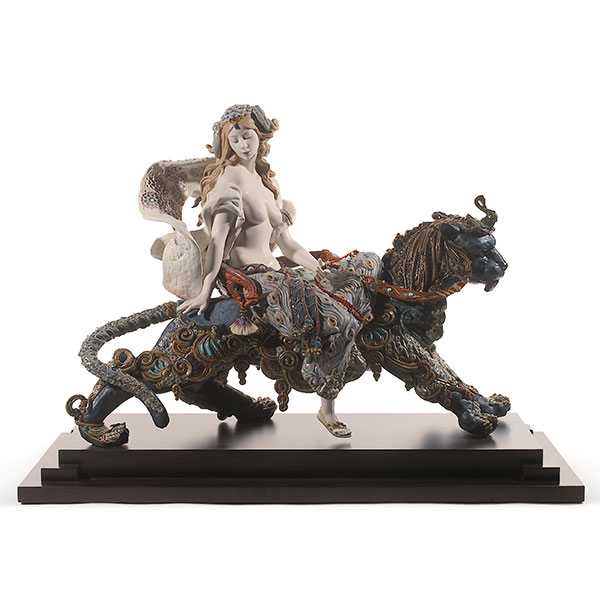
Lladro Bacchante on a Panther F. Polope.
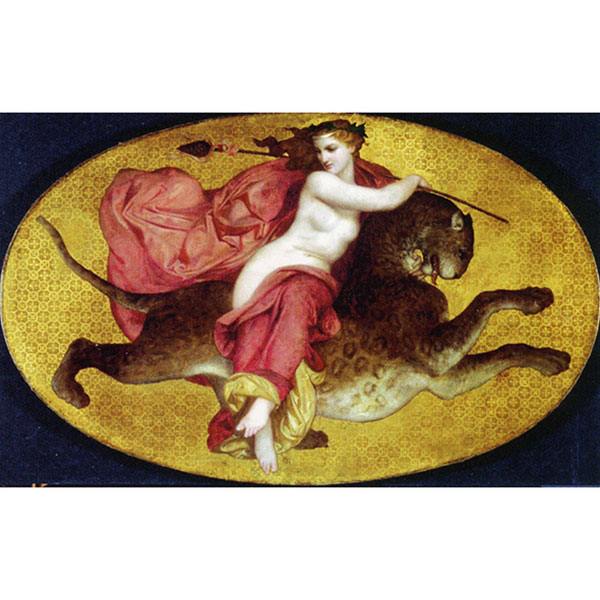
Bouguereau Bacchante on a Panther
